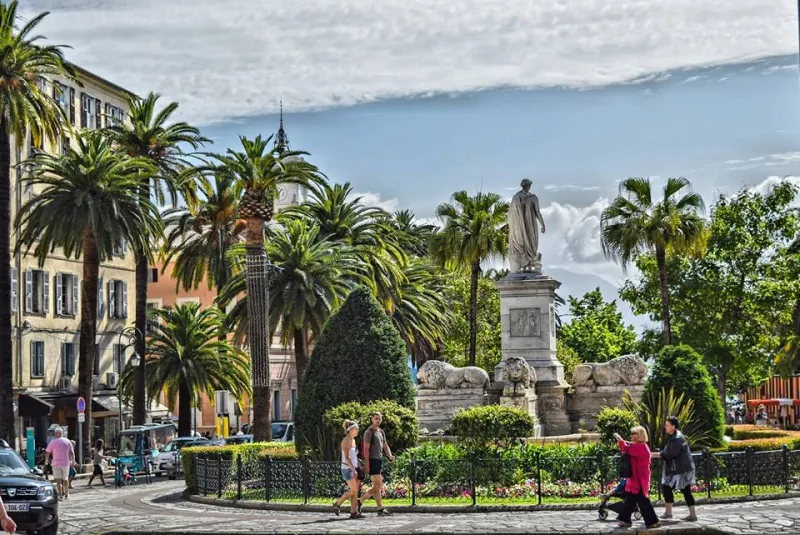Ajaccio, Corsica Cruise Port Guide Info
The city of Ajaccio is the cultural and political capital of the island of Corsica. Renowned as the birthplace of Napoleon Bonaparte, Ajaccio’s many squares and streets pay homage to the conqueror who never returned home. Located along Corsica’s west coast, Ajaccio is a short drive away from hospitable beaches, soaring mountains, and unforgettable gorges. Visitors to the capital can walk along the quaint streets of its old town, stroll along the city’s waterfront promenade, or venture out of the city and take in some of the island’s unique natural beauty.

Corse, as it’s pronounced in French, is as geographically diverse as many large countries, claiming more than 600 miles of coastline, large pine forests, and a mountainous continental divide topped with winter ski resorts. Corsica is home to other natural wonders, including the Prunelli Gorges and Les Calanches, a colorful spectacle of red granite mountains that tower above the aquamarine waters of the Mediterranean. The mountains of Les Calanches are said to change color with the movement of the sun. Mediterranean cultures have praised the island’s natural beauty for centuries. As early as the 6th century BC the Greeks referred to Corsica as ‘Kalliste’, the beautiful.

Places to visit
Cathedrale is Ajaccio’s 16th century cathedral located in the old city. The Cathedrale is dedicated to ‘La Madonuccia’, or Little Madonna, the city’s patron saint who is thought to have protected the residents from black plague epidemics. It houses the painting by Eugéne Delacroix, Virgin of the Sacred Heart. Located to the right of the main entrance is Napoleon Bonaparte’s baptismal font, where he was baptized in July of 1771.
Maison Bonaparte, located on the Rue de Letizia just off Rue Saint Charles, was the house where Napoleon was born and raised. A plaque above the entrance signifies Napoleon’s birth on August 15, 1769. On display are family portraits, period furniture and memorabilia.
Hótel de Ville is the Town Hall and is located on the Place du Maréchal Foch. On the first floor is the Musée Napoléon, which displays Napoleon’s baptism certificate, portraits of family members, and his collection of military medals.
Place du Foch is the city’s finest square. Lined with palm trees and located along the harbor front, the square is an excellent place to absorb the commotion of the surrounding city. A statue of Napoleon wearing a Roman toga sits above a fountain of four lions and faces the Gulf of Ajaccio.
Palais Fesch was the home of Napoleon’s Uncle, Joseph Fesch, and houses the city’s finest art museum. Musée Fesch contains a vast collection of Italian paintings, including works by Titian and Botticelli. Many of these works were spoils of war presented to Joseph Fesch by Napoleon. The Chapelle Impériale is also located here and was the Bonapartes’ funeral chapel. Napoleon’s parents, Carlo and Letizia, and other family members are buried in the crypt. These venues are currently closed for refurbishment.
Place du Gaulle is one of the city’s main squares (known locally as Place du Diamant) and its main statue pays homage to Napoleon Bonaparte. Dressed as the Emperor of Rome, Napoleon is surrounded by his four brothers. The Square offers excellent views of the sea.
Place d’Austerlitz is home to another statue dedicated to Corsica’s most famous son. The memorial was erected in 1938 on a sight where Napolean liked to play as a child. It features Napoleon standing on a white pyramid in his most familiar pose.